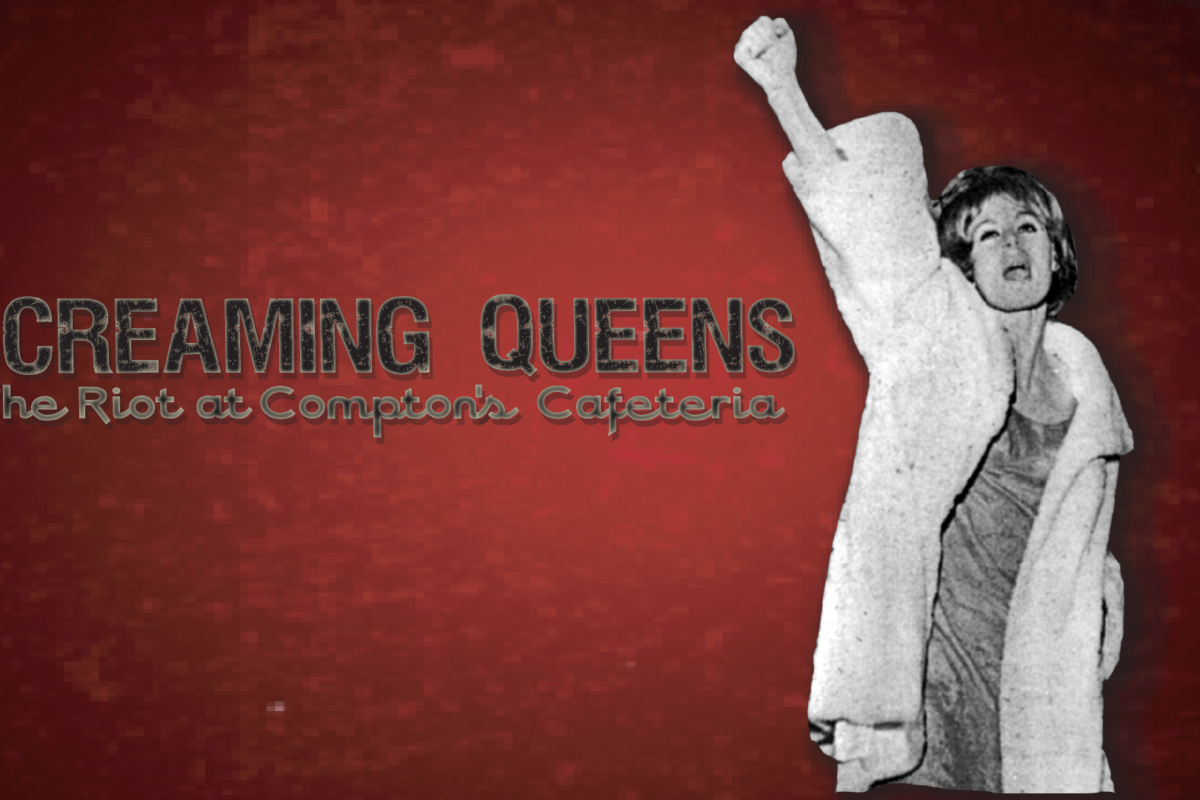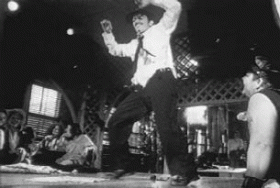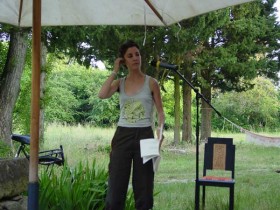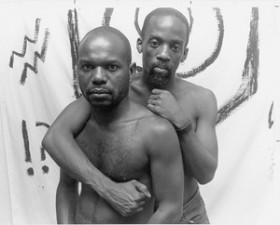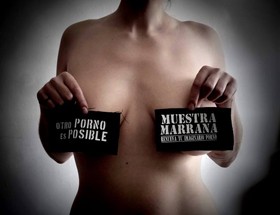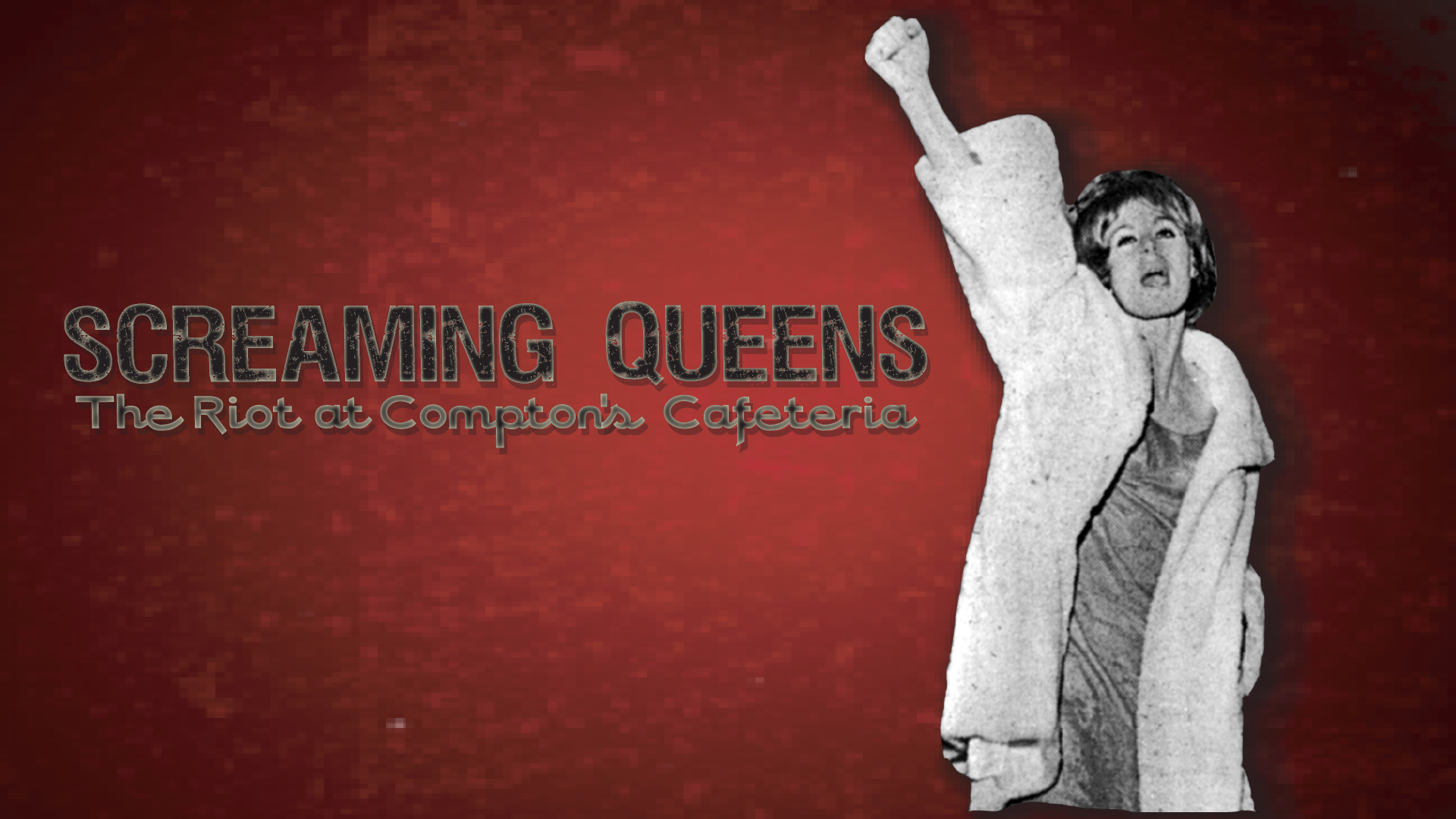
It’s a hot August night in San Francisco in 1966. Compton’s Cafeteria, in the seedy Tenderloin district, is hopping with its usual assortment of transgender people, young street hustlers, and down-and-out regulars. The management, annoyed by the noisy crowd at one table, calls the police. When a surly cop, accustomed to manhandling Compton’s clientele, attempts to arrest one of the queens, she throws her coffee in his face. Mayhem erupts — windows break, furniture flies through the air. Police reinforcements arrive, and the fighting spills into the street. For the first time, the drag queens band together to fight back, getting the better of the cops, whom they kick and stomp with their high-heeled shoes and beat with their heavy purses. For everyone at Compton’s that night, one thing was certain — things would never be the same again.
Screaming Queens introduces viewers to a diverse cast of former prostitutes, drag entertainers, police officers, ministers and neighborhood activists, all of whom played a part in the events leading up to the Compton’s Cafeteria riot. Mixing recent interviews with archival footage, printed documents, impressionistic reenactments and period music, the program depicts a marginalized community few people know, one that exists in the midst of a city famous for its cosmopolitan glamour. With extraordinary candor and from differing points of view, the subjects recount the difficulties they encountered in the Tenderloin, as well as the sense of community they created there in the mid-1960s. Felicia Elizondo tells of prostituting herself in order to survive. Aleshia Brevard, a drag entertainer, describes how her talent spared her from street prostitution. Perhaps most surprising is Sgt. Elliot Blackstone, who helps explain the conflict between the San Francisco Police Department and the city’s transgender community and how the SFPD’s policies changed to reflect greater acceptance in the years following the 1966 riot.
The documentary goes on to show the connection between transgender activism and the larger social upheavals affecting the United States in the 1960s: the civil rights and sexual liberation movements, the youth counterculture, urban renewal, and Great Society antipoverty programs. “Glide Memorial Methodist Church first reached out to the transgender community in these years,” the Rev. Ed Hansen explains, “because of new thinking about the church’s role in society.” Amanda St. Jaymes and Tamara Ching, both transsexual activists and former prostitutes, recount the ferment in the Tenderloin in the 1960s as well as the growing sense of dignity among transgender people. But in the summer of 1966, many others, including most San Francisco police officers, did not share these new ideas. By bringing these social and political tensions to light, Screaming Queens offers viewers a fuller understanding of the events and conditions that led up to the riot.
Further, Screaming Queens explores the reverberations, both large and small, of the rise of transgender activism, a story in which the riot at Compton’s Cafeteria plays a pivotal role. Sgt. Blackstone tells of singing “We Shall Overcome” with Tenderloin activists who successfully fought for new social services for their community. Suzie Cooke recounts her job as a transsexual counselor in one of the new agencies founded after the riot. Ching connects the Tenderloin transsexuals’ new activism to the rising Gay liberation movement. And St. Jaymes explains that although the queens from Compton’s were “wild as the wind,” they were “determined to make something of themselves, and be something other than prostitutes.”
The film ends on a high note. It shows how in just two short years transgender activism helped transform San Francisco culture in subtle and profound ways and presents reflective comments from the Compton’s Cafeteria subjects who bravely ushered in a controversial revolution that continues today.
Screaming Queens sets out to foster a better understanding of the experiences of transgender people and to inform a broad audience of their often-difficult lives and unheralded accomplishments. Along the way, the program also illuminates the interplay of urban politics, community mobilization and social services in creating the modern inner city.
This important documentary tells a forgotten San Francisco story of dramatic social change from the compelling perspective of firsthand participants. The film’s story focuses on the experiences of the rioters themselves, the police and the social-activist clergy members. It also follows historian Susan Stryker’s rediscovery of the 1966 disturbance at Compton’s Cafeteria. At that time, transgender people faced serious employment discrimination, police harassment and other difficulties. The program’s subjects describe the challenging circumstances and the misconduct of officials that drove them to take militant action in the streets. Screaming Queens then examines the significant changes — in police practices, social services and self-image — that came out of the conflict. In her story within the story, Stryker reveals how the Compton’s Cafeteria riot, although not as large as New York’s Stonewall conflict, was a dramatic turning point in a decades-long process of transgender community formation and political mobilization in San Francisco, a process that involved dramatic changes in medical practices, urban politics, neighborhood geography and public consciousness.
Screaming Queens: The Riot at Compton’s Cafeteria is produced in association with The Independent Television Service (ITVS) and KQED Public Television.
*Susan Stryker recently returned to the United States after holding a Visiting Scholar appointment in the Department of Critical and Cultural Studies at Macquarie University in Sydney, Australia. Between 1999 and 2004, Stryker served as executive director of the GLBT Historical Society in San Francisco. She earned a Ph.D. in U.S. history from the University of California, Berkeley, and later held a postdoctoral fellowship in sexuality studies at Stanford University. A popular public speaker and prolific writer, Stryker is author of The Transgender Studies Reader (Routledge, forthcoming); Queer Pulp (Chronicle, 2001); the transgender studies special issue of GLQ: A Journal of Lesbian and Gay Studies (Duke, 1998); Gay by the Bay: A History of Queer Culture in the San Francisco Bay Area (Chronicle, 1996); and numerous articles. She was featured in Monika Treut’s film Gendernauts (1999) and was scenarist and scriptwriter for Brandon, Shu Lea Cheang’s online multimedia installation examining gender, embodiment, violence, and media at the SoHo Guggenheim (1998-1999).
*Victor Silverman is an associate professor of history at Pomona College. He earned his Ph.D. from the University of California, Berkeley. Often quoted in the press for his expertise in politics and history, he is the author of many books and articles: California (Interlink Publishing, forthcoming); Los Angeles Times Front Page (Tribune Media, 2003); “The Failures of Jewish Americanization” in Jewish Locations (Rowan & Littlefield, 2001); and Imagining Internationalism in American and British Labor (University of Illinois, 1999). He currently consults with the international labor movement on sustainable development policy at the United Nations. Silverman is a former public service and dramatic program producer and writer for KPFA-FM Radio, Berkeley, and he adapted and directed a stage version of Allen Ginsberg’s Howl. He is also the scriptwriter of Out of the Shadow, a feature film on the life of immigrant writer Rose Cohen, currently in development with Northwest Passage Productions.
